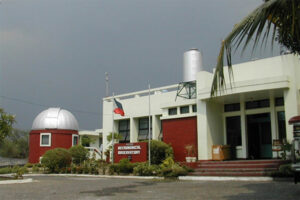A GROUP of Filipino scientists urged the government to provide a significant increase in the state weather bureau’s budget, citing escalating threats from changing climate patterns.
The call was made after Mr. Marcos directed government agencies to be “accurate” and “advanced” in weather reporting following the devastation from Tropical Storm Paeng, with international name Nalgae, which has killed at least 48 Filipinos and injured dozens more as of Sunday’s monitoring.
“If we are asking where the government’s response fell short, it is rooted on the declining budget allocation of the department,” Philippine-based group AGHAM said in a statement, noting that slashing P1.6 billion from the proposed P3.048-billion budget of the agency for 2023 would “negatively impact the agency’s weather forecasting capacity.”
“Long before the Paeng typhoon disaster, the government knew that our Disaster Risk Reduction Management (DRRM) needed significant improvement,” AGHAM said. “With the increasing threats of climate change President Marcos Jr said that this is included in his top priorities. Yet he cuts the budget on departments that address this issue.”
State weather bureau PAGASA — which stands for Philippine Atmospheric, Geophysical, and Astronomical Services Administration — is under the Department of Science and Technology (DoST).
AGHAM said the P1.3-budget budget of PAGASA in 2022 is also lower than the P1.6 billion allocated to the agency in 2021.
For the 2023 budget, the DoST’s budget request of P44.17 billion was reduced to P24.06 billion, lower than the previous year’s budget of P24.27 billion, it added.
“President Marcos Jr., should put money where his mouth is.”
In a televised briefing with Cabinet officials on Saturday, Mr. Marcos said the Department of Interior and Local Government, PAGASA, and DoST should have good communication exchanges.
“If we give them the advance information, good, accurate, advance information, then I’m pretty sure that…LGUs (local government units) will respond and they will do everything,” he said.
Mr. Marcos added that “we’ll see what we can do” to improve forecasting, particularly in terms of flooding risks.
Mr. Marcos, meanwhile, expressed disappointment over the death toll in the southern province of Maguindanao, where at least 40 people have been confirmed to have died by the regional government.
Speaking to Science and Technology Secretary Renato U. Solidum Jr., the President asked why there was no warning that the flooding in the province would be worse.
Mr. Solidum said in response that it was announced that heavy rainfall would happen in parts of Mindanao, noting that flood advisories had been issued.
PAGASA issues regular advisories on rainfall and flooding forecast at regional levels, which are distributed to local government disaster teams as well as published on its online platforms.
Mr. Marcos attended the Sunday afternoon briefing virtually, prompting citizens to ask about his whereabouts. There have been claims on social media that he’s in Japan — which acting press secretary Cheloy V. Garafil denied in a message to reporters.
A year-long state of calamity is likely to be enforced in Paeng-hit areas in Bicol and Bangsamoro regions, according to a report by the state-run Philippine News Agency.
A new tropical cyclone, which will be named Queenie locally, was set to enter the Philippines on Monday morning. It would be the Philippines’ fifth tropical cyclone in October alone and the 17th for the year.
Paeng made landfall on Friday, affecting 277,383 families or 932,077 people in in more than 2,400 villages in 14 regions across the country, based on an 11:00 am report by the National Disaster Risk Reduction and Management Council (NDRRMC) on Sunday.
The disaster council said 44,847 families or 168,453 people were still staying in 2,125 evacuation centers.
Of the 48 deaths reported, 37 were confirmed and 11 were still being validated. Thirty-three of the confirmed deaths were in the Bangsamoro region and two in Soccsksargen region in the country’s south. Two deaths were recorded in Western Visayas. NDRRMC said 22 people were missing.
Seven of the 11 deaths that were still under validation were recorded in Bangsamoro, two in Eastern Visayas, and one each in Soccsksargen and Bicol regions.
Paeng was heading toward the South China Sea as of Sunday morning, packing maximum sustained winds of 85 kilometer per hour (kph) near the center and gustiness of up to 105 kph, according to an 11:00 am bulletin by PAGASA. — Kyle Aristophere T. Atienza

